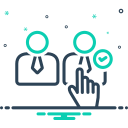Entry-Level Roles You Can Land Without a CS Degree
Help desk roles teach troubleshooting, documentation, and empathy—powerful foundations for systems or cloud administration. Maya began by resolving password resets and device issues; within a year, she was automating onboarding scripts. If you’re in support now, share one problem you solved this week and how you’d automate it next.
Entry-Level Roles You Can Land Without a CS Degree
Quality assurance builds a testing mindset that developers prize: breaking assumptions, writing test cases, and noticing edge conditions. Arjun wrote basic UI tests, then learned Python to automate repetitive checks, eventually contributing small bug fixes. Thinking of QA as your entry point? Comment with a product you admire and one improvement you’d test first.




